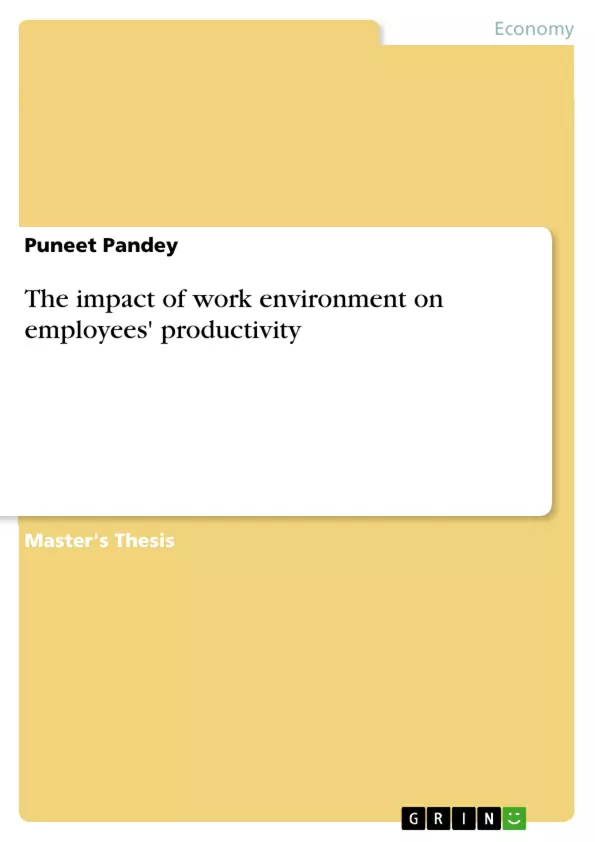This study is designed to examine the impact of working environment on employee’s productivity at the Shree Baidyanath Ayurveda Bhawan Pvt. Ltd. This is the Pvt. Ltd institution which operates at the center of Allahabad city with about 320 employees. The problem identified which made to undergo this research is based on the physical work environment which mostly affects an employee’s productivity. The institute is located in an area of nearly 14 acres which is large compared to the number of employees. This resulted to enough offices for employees to do their work effectively, silence which cause comfort depending on the task they are given and the environment of the place they are working.
Through this study the employer will get to know how its work environment impacts greatly on the employee’s level of motivation and productivity. A well designed office signals the values and objectives of the organization and the use of design in office interior communicates an organization values and identity. Office design therefore should be one of the factors in affecting employee’s productivity. Employee’s morale is often interrelated when it comes to productivity in the work environment. It is therefore important to find out the impact of working environment on employee’s productivity at this institute which will provide knowledge and measures to other organization in Ayurvedic medicine industry.
Table of Contents
- CHAPTER-1 OBJECTIVE OF STUDY & INTRODUCTION
- Background to the Study
- Statement of the Research Problem
- Research Objectives
- General Objective
- Specific Objectives
- Research Questions
- Significance of the Study
- Scope of the Study
- Organization of the Study
- CHAPTER-2 REVIEW OF LITERATURE
- Introduction
- Conceptual Definitions
- Working Environment
- Employee Productivity
- Theoretical Literature Review
- Goal-Setting Theory
- Expectancy Theory
Objectives and Key Themes
This research aims to investigate the impact of work environment on employee productivity at Shree Baidyanath Ayurveda Bhawan Pvt. Ltd. The study utilizes various theoretical frameworks, such as goal-setting and expectancy theory, to analyze the complex relationship between work environment factors and employee performance.
- The importance of a positive work environment in boosting employee productivity.
- The role of work environment factors such as company culture, leadership style, and employee relations in influencing employee motivation and engagement.
- The impact of work environment on employee performance metrics, including output, efficiency, and job satisfaction.
- Exploring potential strategies for improving work environment and enhancing employee productivity.
- The significance of understanding and managing work environment factors for organizational success.
Chapter Summaries
The first chapter introduces the research topic, providing background information on the study, its objectives, research questions, and significance. The chapter also outlines the scope and organization of the study. The second chapter focuses on the literature review. It examines relevant theories and conceptual definitions related to work environment and employee productivity, including Goal-Setting Theory and Expectancy Theory.
Keywords
The research revolves around key concepts such as work environment, employee productivity, organizational culture, leadership, employee relations, performance metrics, and strategies for improving work environment. This study aims to explore the complex relationship between these factors and their impact on organizational success.
- Citation du texte
- Puneet Pandey (Auteur), 2017, The impact of work environment on employees' productivity, Munich, GRIN Verlag, https://www.grin.com/document/412794



